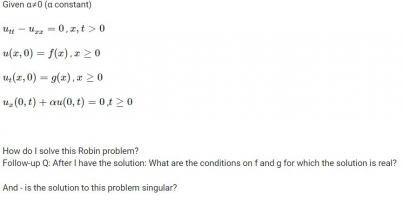HALEY PHAM
New member
- Joined
- Jun 22, 2022
- Messages
- 2
I started by solving like I would do with any wave equation but couldn't understand how to incorporate the Robin IC.
got stuck!
could really use your help!

I happened to forget to add the c^2 in the first equation indicating this is in fact a wave equation.
I started by solving like I would do with any wave equation (and got to the left and right mover F(x), G(x) - am I supposed to sum them and get the d'Alembert formula?)
